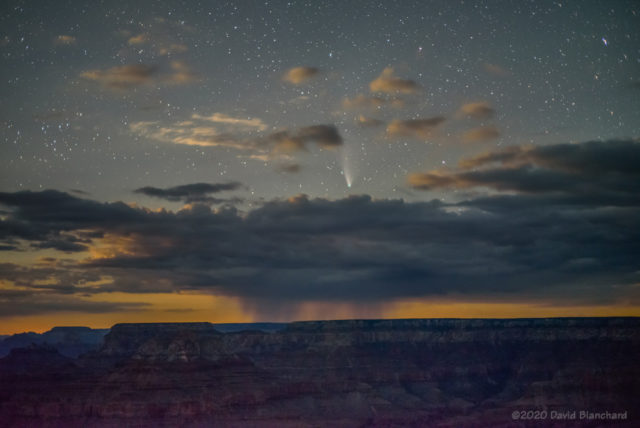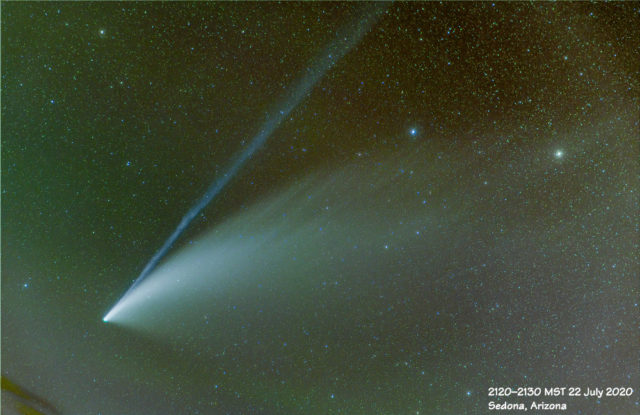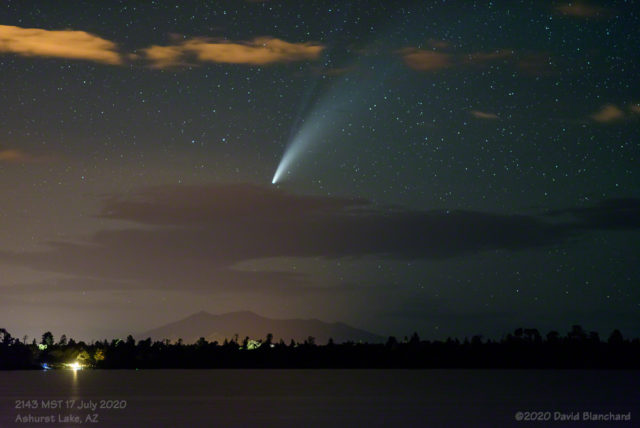The waxing Moon is getting brighter in the evening sky and this makes it more difficult to see Comet C/2020 F3 (NEOWISE). In fact, I was unable to see it with the unaided eye but both binoculars and long-exposure photographs easily brought out the comet.
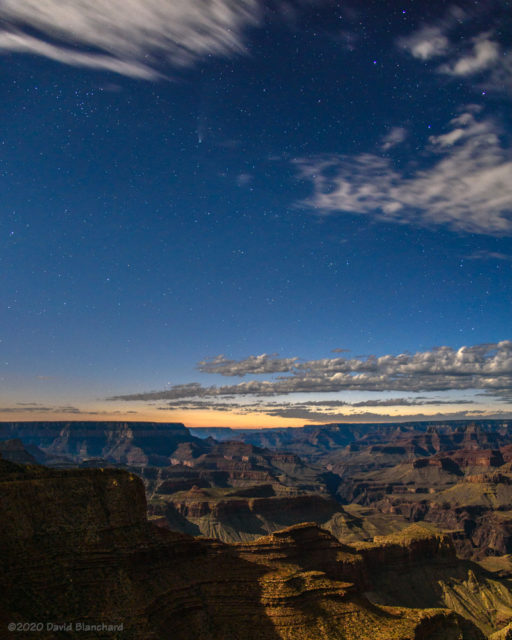
On the other hand, the presence of the first-quarter Moon illuminates the inner canyon while the comet is faintly visible above.
The image is a composite. The first image is on a fixed tripod to get a sharp result of the moonlit canyon. The second image is on a tracker to get sharp points for the stars and comet. The two images are then combined. Camera settings are 24mm, ƒ/4, 120 seconds, ISO 400.
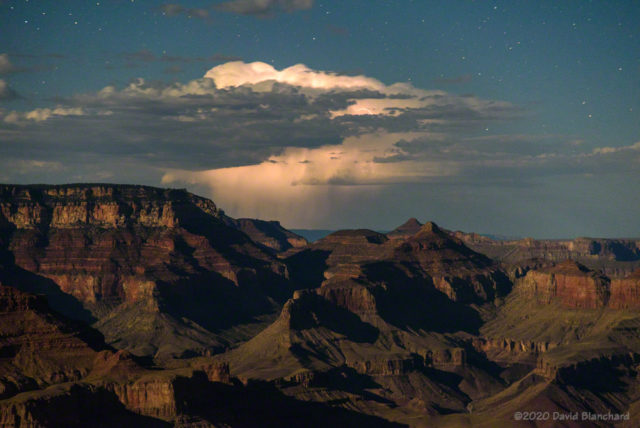
As a bonus, a late evening thunderstorm developed just west of Page and moved to the northeast while producing a lot of lightning. Although no cloud-to-ground strokes were noted, the lightning easily illuminated the cloud from the inside.
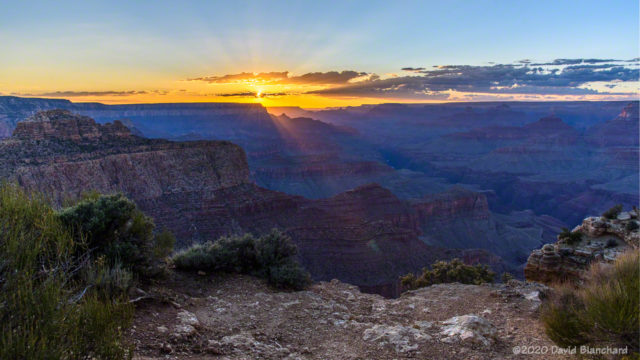
Second bonus: there was a nice sunset, too.

